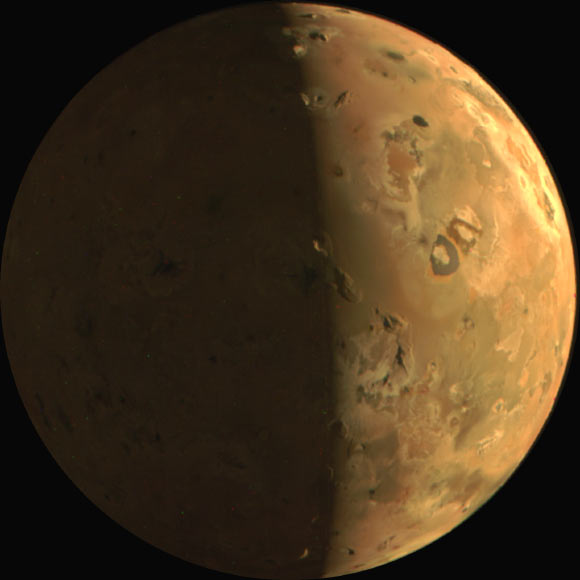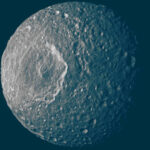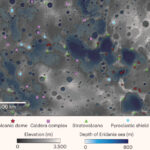On February 3, 2024, NASA’s Juno spacecraft made a second close flyby of Io, the fifth of Jupiter’s moons and the third largest. Like the previous flyby on December 30, 2023, this second pass was at a distance of about 1,500 km (930 miles). During the twin flybys, the spacecraft’s JunoCam instrument returned spectacular, high-resolution images and raw data. The flybys were designed to provide new insight into how Io’s volcanic engine works and whether a global magma ocean exists under the rocky, mountainous surface terrain of the volcanic moon.
The JunoCam instrument aboard NASA’s Juno spacecraft imaged Io, the most geologically active body in our Solar System, on February 3, 2024, from a distance of about 7,904 km (4,911 miles). Image credit: NASA / SwRI / MSSS.
Io is the innermost of the four Galilean moons of Jupiter and the fourth-largest moon in our Solar System.
It is approximately 3,630 km (2,556 miles) across — only slightly bigger than our own Moon.
Aside from Earth, it is the only known place in the Solar System with volcanoes erupting hot lava like that on our planet.
Io has more than 400 active volcanoes, which are caused by tidal heating, the result of a gravitational tug-of-war between Jupiter’s gravity and the smaller but precisely timed pulls from Europa and Ganymede.
The moon’s yellow-white-orange-red coloration is produced by sulfur dioxide-frost on its surface, elemental sulfur and a variety of sulfur allotropes.
Volcanoes were first discovered on Io in 1979, and subsequent studies by NASA’s Galileo spacecraft and ground-based telescopes show that eruptions and lava fountains occur constantly, creating rivers and lakes of lava.
Only 13 giant eruptions were observed between 1978 and 2006, in part because only a handful of astronomers regularly scan the moon.

The JunoCam instrument aboard NASA’s Juno spacecraft imaged Io on December 30, 2023, from a distance of about 5,857 km (3,639 miles). Image credit: NASA / SwRI / MSSS.
NASA’s Juno spacecraft has been monitoring Io’s volcanic activity from distances ranging from about 11,000 km (6,830 miles) to over 100,000 km (62,100 miles), and has provided the first views of the moon’s north and south poles.
On December 30, 2023, Juno came within about 1,500 km of the surface of Io; the orbiter made a second ultra-close flyby of the moon on February 3, 2024.
The second pass went predominantly over the southern hemisphere of Io, while prior flybys have been over the north.
“By combining data from these close flybys with our previous observations, the Juno science team is studying how Io’s volcanoes vary,” said Juno’s principal investigator Dr. Scott Bolton, a researcher at the Southwest Research Institute.
“We are looking for how often they erupt, how bright and hot they are, how the shape of the lava flow changes, and how Io’s activity is connected to the flow of charged particles in Jupiter’s magnetosphere.”

Juno captured two volcanic plumes rising above the horizon of Io on February 3, 2024, emitted either by two vents from one giant volcano, or two volcanoes near each other. The JunoCam instrument imaged the plumes from a distance of about 3,800 km (2,400 miles). Image credit: NASA / JPL-Caltech / SwRI / MSSS / Andrea Luck.
“We are investigating the source of Io’s massive volcanic activity, whether a magma ocean exists underneath its crust, and the importance of tidal forces from Jupiter, which are relentlessly squeezing this tortured moon.”
“There’s evidence of an active plume, tall mountain peaks with well-defined shadows, and lava lakes — some with apparent islands.”
Starting in April 2024, Juno will carry out a series of occultation experiments that use Juno’s Gravity Science experiment to probe Jupiter’s upper atmospheric makeup, which provides key information on the planet’s shape and interior structure.




